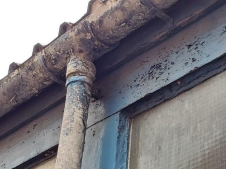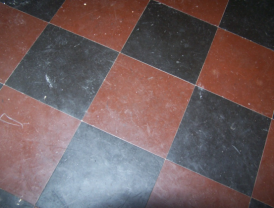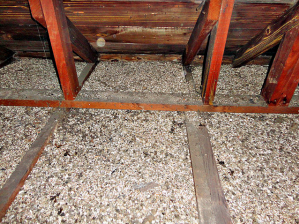Asbestos was a very popular building material in the construction of homes and buildings in the UK from around 1930. This was mainly due to cost effectiveness, as it was very cheap. The material was also very readily available, and offered durability, strength, insulation and good fire resistance to properties. As the health related risks of exposure to asbestos fibres became apparent, the import, manufacture and use of asbestos in the UK was completely banned in November 1999. Properties which were constructed prior to this date are likely to contain at least some asbestos containing materials, and you may also find properties constructed shortly after this date which contain them, as some building contractors may have had surplus stock of asbestos containing materials which they used to get rid of (although they shouldn’t have!)

Asbestos containing materials are only dangerous if they are damaged or disturbed, as this is when the asbestos fibres are released. Inhalation of the fibres can lead to Asbestosis, which can also lead to an increased risk of developing other serious conditions such as pleural disease, mesothelioma and lung cancer. As surveyors, we are trained to identify any potentially asbestos containing materials throughout the property. Asbestos can be found in most places throughout a property such as:
- Walls
- Outbuildings
- Roof Tiles
- Floor Tiles
- Ceiling Tiles
- Loose Insulation (lofts)
- Insulating Boards
- Textured or SprayedCoatings (eg artex)
- Cladding
- Sink Pads
- Pipe Lagging
- Downpipes
- Rainwater Goods
- Soffits and Fascias
- Cladding
- Toilet Seats
- Partitions
- Electrical Panels
- Window Sills

Non-licensed works can be carried out to asbestos containing materials, and should be done so by contractors who are trained in asbestos awareness. Non-licensed works include:
- Encapsulation of asbestos containing materials (ACMs) that are in good condition.
- Removal of asbestos cement products that are carefully handled/removed without breaking them up
- Removal of small areas of textured decorative coatings
- Removal of loosely fixed asbestos insulating board (AIB) panels
- Work on other materials containing low risk asbestos types such as paints, bitumen resins, rubber, etc.

However, there are also some types of non-licensed work that need to be notified to the local enforcing authority or HSE, and these are known as notifiable non-licensed work, which include:
- Removing sprayed coatings (limpet asbestos)
- Removal or other work which could disturb pipe lagging
- Any work involving loose fill asbestos insulation
- Any work on asbestos millboard
- Cleaning up large amounts of loose debris containing ACM dust
- Work on AIB which is not short duration
It is an offence to carry out licensable work with asbestos without a licence, and you could be prosecuted as a result.
Obtaining a survey prior to purchasing your property will ensure that you are aware of all potential asbestos containing materials throughout, so that you are able to carry out any planned maintenance/renovation work safely.



